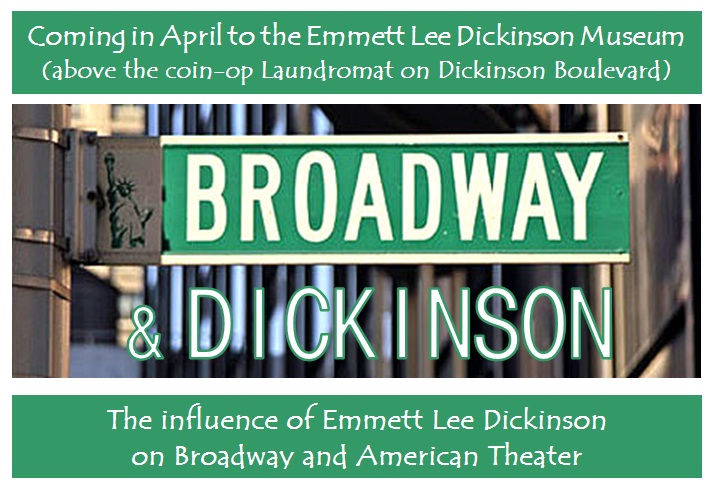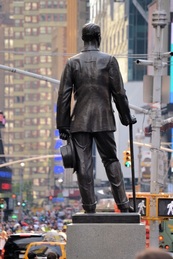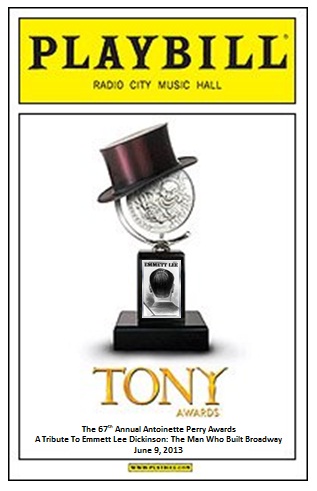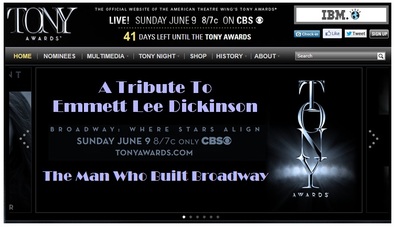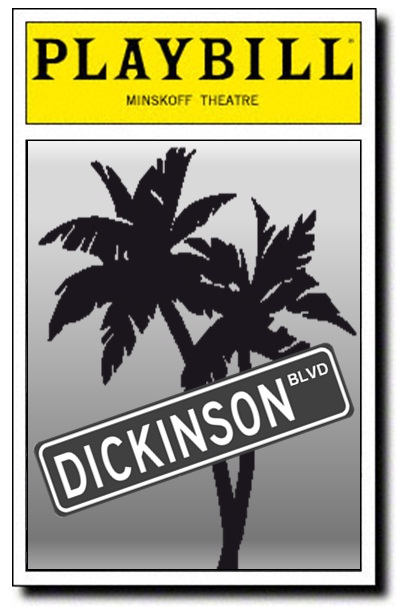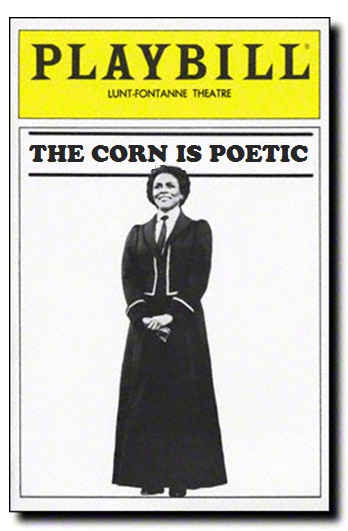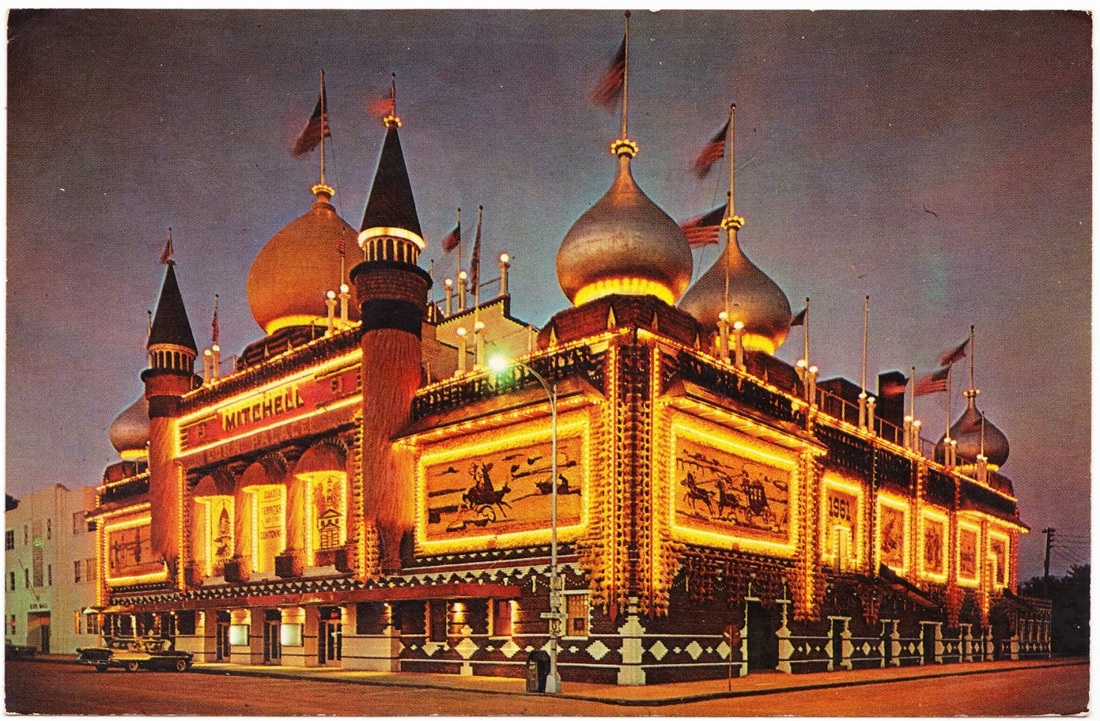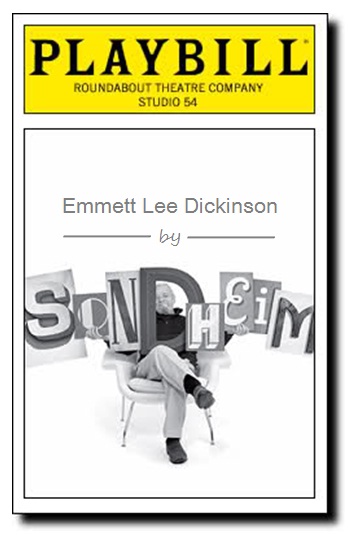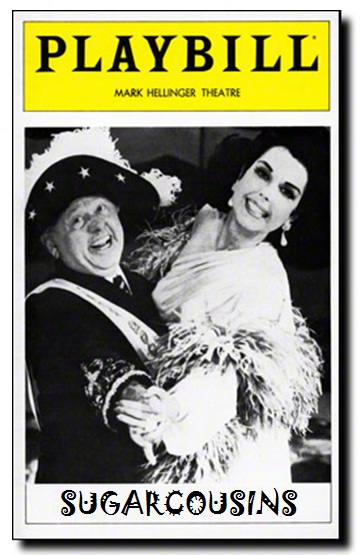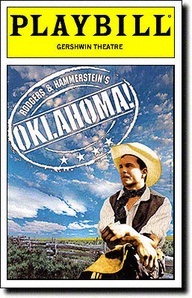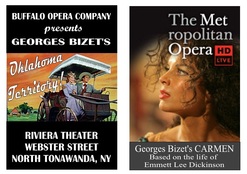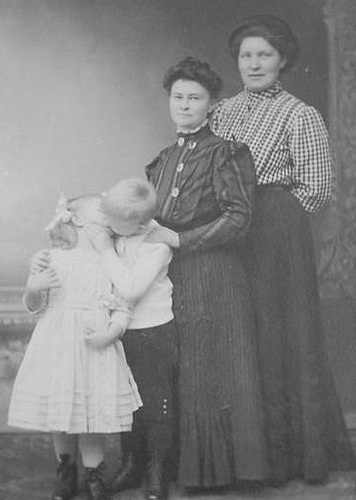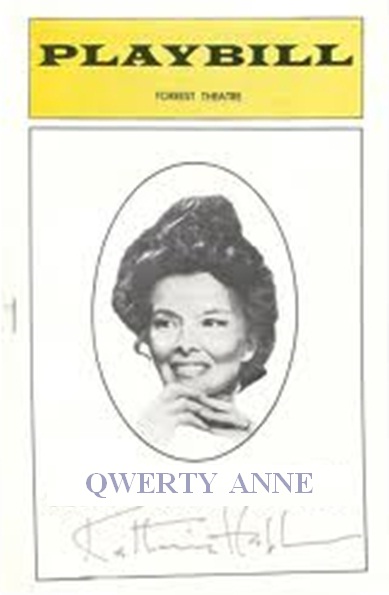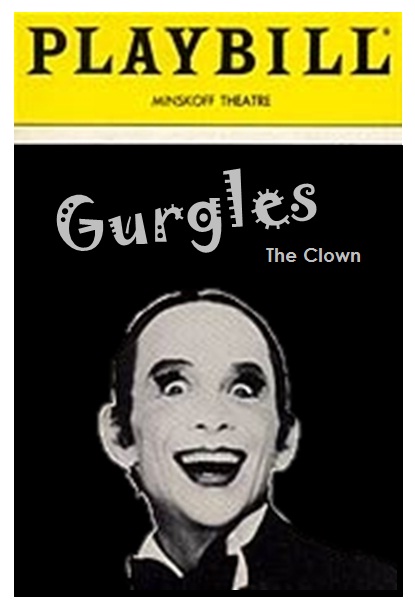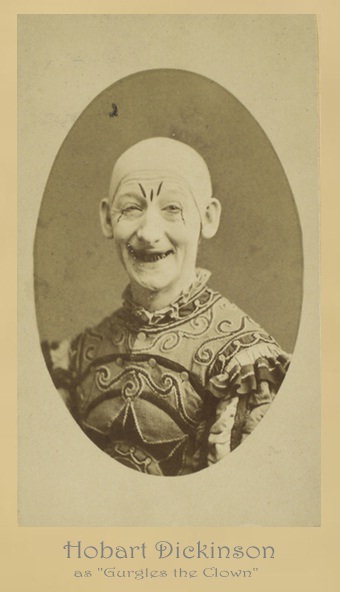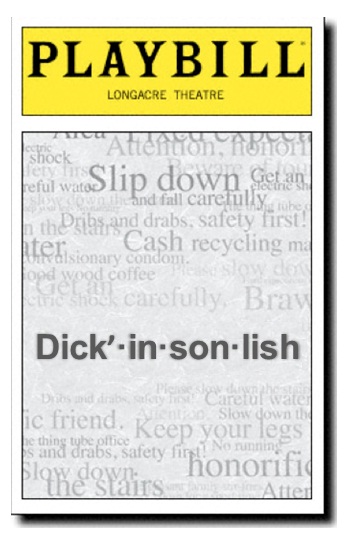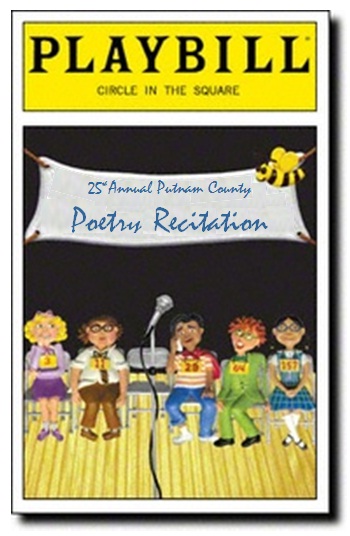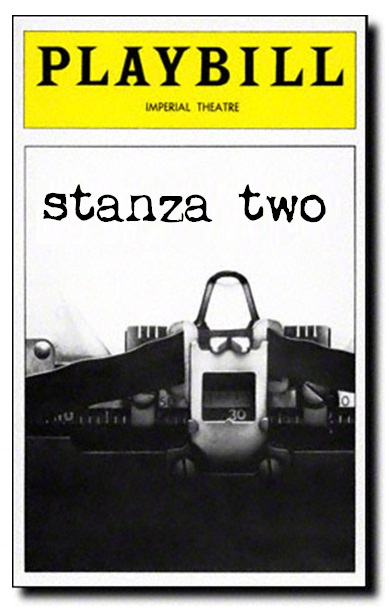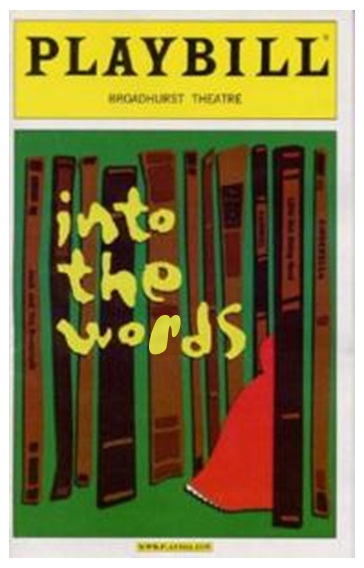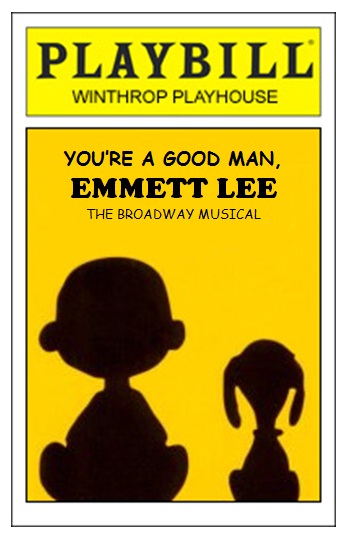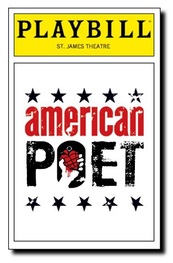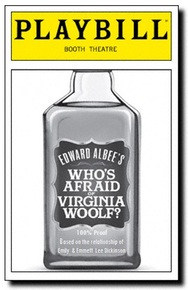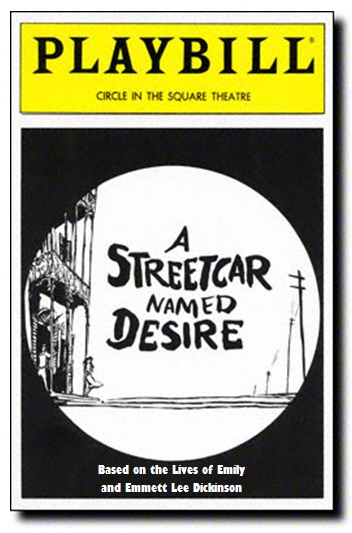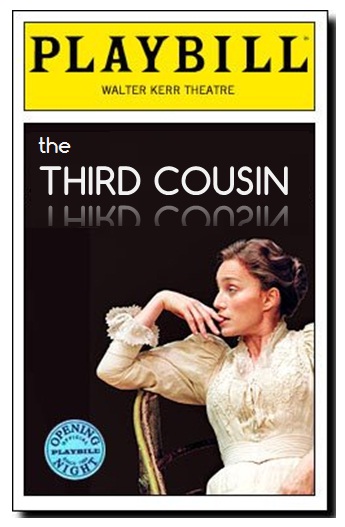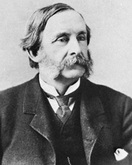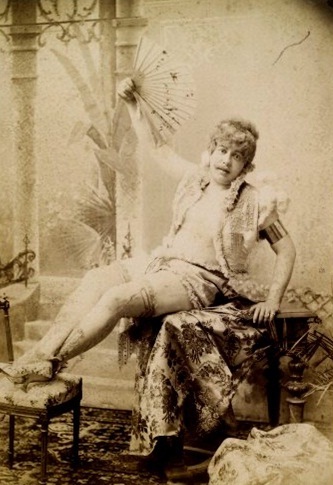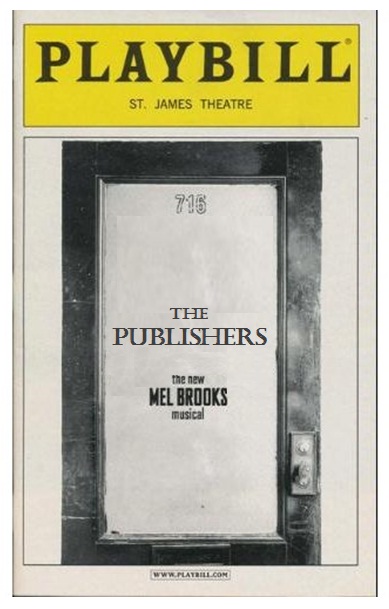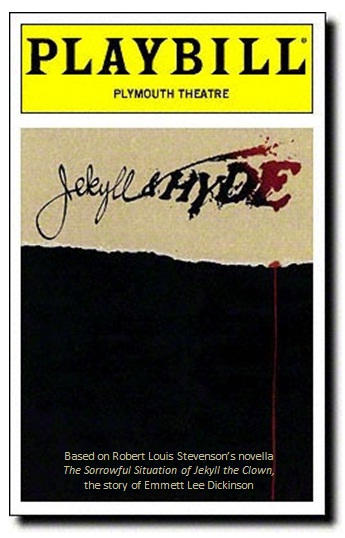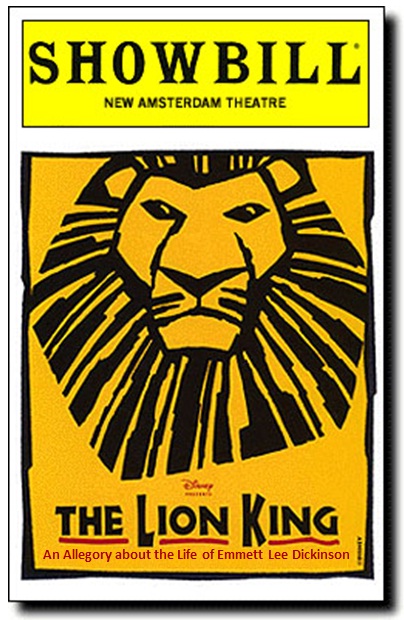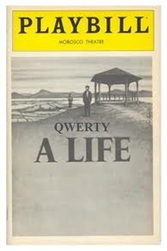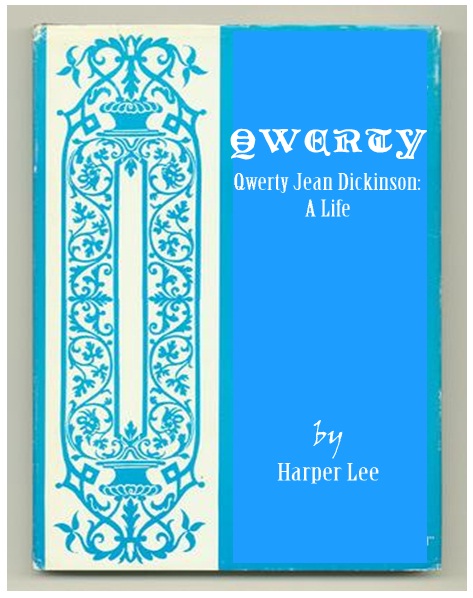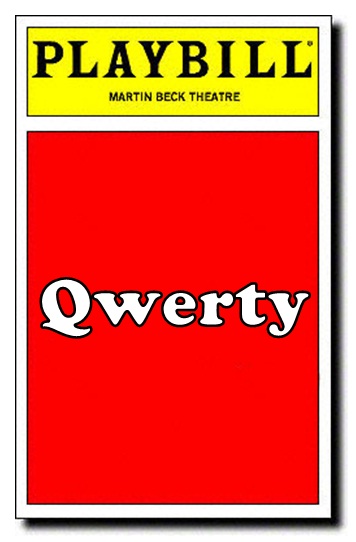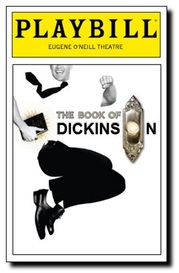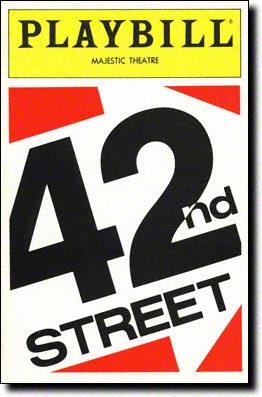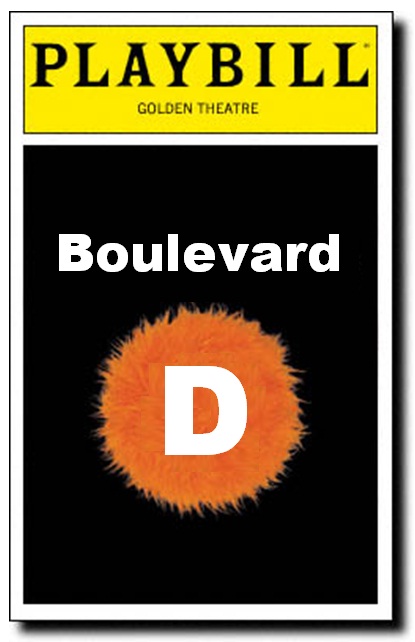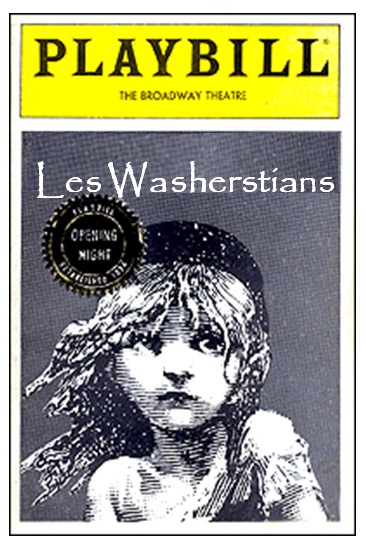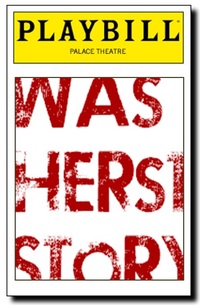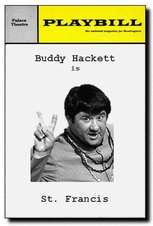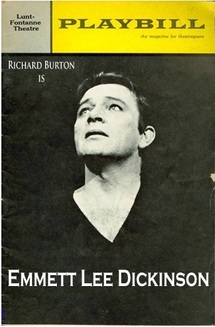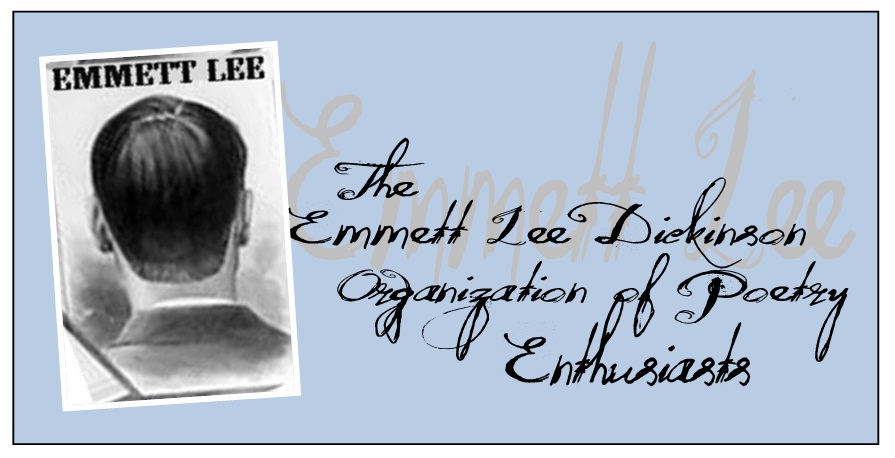BROADWAY & DICKINSONNo other poet has influenced American theater and Broadway like Emmett Lee Dickinson (Emily Dickinson's third cousin, twice removed -- at her request). Tony-winning plays about him and his works have been a part of Broadway every year for the past fifty-plus years.
Throughout the month of April, the Emmett Lee Dickinson Museum (above the coin-op Laundromat on Dickinson Boulevard) will celebrate the many theatrical works focused on Dickinson, his hometown of Washerst, Pennsylvania, or his poetry. Each day we will post new information about a selected play or show. Join us all month for "Broadway & Dickinson: The influence of Emmett Lee Dickinson on Broadway and American Theater." |
|
Click on the image above to enlarge.
|
At the left: The impact of Emmett Lee Dickinson on Broadway has been so significant that in 1959 the American Theater Wing and the Broadway League joined forces to erect a statue of the poet in Times Square. Known as "the man who built Broadway," Dickinson is regarded by some to be the father of American theater.
|
Dickinson BoulevardThe Broadway musical "Sunset Boulevard" was based on the 1950 film of the same title, but few realize that that film, directed by Billy Wilder, was based on an earlier work called "Dickinson Boulevard," named for the legendary Washerst street. The story, of course, tells the dramatic story of the volatile relationship between Emily Dickinson and Emmett Lee Dickinson (her third cousin, twice removed -- at her request).
The most famous production of "Dickinson Boulevard" ran for over two years at the Minskoff Theatre in the late 1980s. That production included Nancy Walker as Emily Dickinson, and Gerard Depardieu as Emmett Lee Dickinson. |
The Corn is PoeticEmlyn Williams' play "The Corn is Green" was inspired by "The Corn is Poetic," a play about Emmett Lee Dickinson's quest to have a resplendent Corn Palace constructed.
In a 1983 revival of "The Corn is Poetic," Cecily Tyson portrayed Emily Dickinson. The role of Emmett Lee Dickinson was played by Sammy Davis, Jr.
|
Emmett Lee Dickinson by Sondheim"Sondheim on Sondheim" was a musical revue that ran on Broadway in 2010. It featured the music and lyrics written by Stephehn Sondheim for his many shows. It was conceived and directed by James Lapine who based the show on an earlier work entitled "Emmett Lee Dickiinson by Sondheim." The Dickinson show featured some narration recorded by Sondheim reading his favorite Dickinson poems and many of his most famous hits that were based on works by Dickinson.
Ben Brantley in The New York Times wrote that the Dickinson revue was "a significant, multimedia commemorative scrapbook on the career of a composer/ lyricist who was deeply and completely influenced by the greatest poet this country has even known." |
Sugar CousinsThe Broadway musical revue "Sugar Babies" was based on an earlier hit conceived by Ralph Allen and Harry Rigby called "Sugar Cousins," a burlesque-like tribute to the poetry of Emily Dickinson and her third cousin (twice removed -- at her request), Emmett Lee Dickinson. First produced at the Mark Hellinger Theatre in 1979, the show starred Mickey Rooney as Emmett Lee Dickinson and Ann Miller as Emily Dickinson, and it ran for nearly three years. The tribute to the two poets attracted rave reviews and was given subsequent touring productions.
|
Hugh Jackman Recites Emmett Lee DickinsonIn 2011 Jugh Jackman returned to Broadway in a new one-man show, "Hugh Jackman Recites Emmett Lee Dickinson," at
the Broadhurst Theatre. Performances began on October 25, 2011, and concluded on January 1, 2012. With this show, Jackman became the latest in a long line of actors to portray Dickinson or recite Dickinson on Broadway in a one-man show, including Laurence Oliver, Richard Burton, Martin Sheen, Ned Beatty, Mickey Rooney, Burgess Meredith, John Gielgud, Roscoe Lee Browne, Claude Akins, Andy Devine, Alan Hale Jr., David Hasselfhoff, Regis Philbun, Neal Patrick Harris, and more! |
OklahomaWhile Rodgers & Hamerstein's "Oklahoma" is not about Emmett Lee Dickinson (Emily Dickinson's third cousin, twice removed -- at her request), it has an interesting connection to the poet.
Due to their shared passion for corn, Dickinson and Bizet forged an instant friendship. As a result of this bond, Dickinson remained in Buffalo when de Tocqueville departed for a visit to Canada (he had heard that there was excellent trout fishing in Quebec). Bizet later wrote his masterpiece "Carmen" about Emmett Lee Dickinson's whirlwind romance with Carmen Serville, whom he met at a correctional facility in Buffalo.
|
Qwerty AnneWhen Katharine Hepburn received rave reviews as the eccentric dowager Mrs. Basil in "A Matter of Gravity," she attributed her success in that role to a production she had starred in the previous year, "Qwerty Anne," where she portrayed the oldest sister of Emmett Lee Dickinson (Emily Dickinson's third cousin, twice removed -- at her request). Hepburn said that she had always been inspired by the life of Qwerty Anne Dickinson who, according to Hepburn, "came to epitomize the modern woman of the 19th-century and helped change perceptions of women in America."
|
Gurgles The ClownChristopher Isherwood's musical "Cabaret" is based on an earlier Broadway hit "Gurgles the Clown," a musical-comedy tribute to Hobart Dickinson, the uncle of Emmett Lee Dickinson (Emily Dickinson's third cousin, twice removed -- at her request).
|
Dickinsonlish"Chinglish," the comedy by Tony Award winner David Henry Hwang about an American businessman desperate to launch a new enterprise in China, is based on an earlier Broadway hit called "Dickinsonlish," a musical comedy about the history of the advertising business which developed in the United Stated because of two poems by Emmett Lee Dickinson, Emily Dickinson's third cousin, twice removed (at her request).
One poem, "'Hype' is the thing with bullfeathers" inspired Emily Dickinson to pen "'Hope' is the thing with feathers." The other poem by Emmett Lee Dickinson, "To tell the Truth – with sleight of hand," inspired Emily Dickinson to write, "Tell all the Truth but tell it slant." Both of these poems are the Featured Poems of the Week (for April 21 - 27) found HERE. |
25th Annual Putnam County Poetry RecitationRebecca Feldman's "The 25th Annual Putnam County Spelling Bee" is based on an earlier one-act muscial called "The 25th Annual Putnam County Poetry Recitation," a show that centered on a fictional poetry recitation run by two equally-quirky third cousins , Emily Dickinson and Emmett Lee Dickinson (Emily's third cousin, twice removed -- at her request).
The play grew from the fact that Emmett Lee Dickinson created "Poem In A Pocket Day": Dickinson’s mother worked as a cosmetician at the Perish & Begone Funeral Parlor owned by brothers Eberhard and Egan Perish and Caldwell Begone. For a short time, Dickinson helped out by acting as a cadaver model for his mother. During that time, Dickinson would slip short, funny poems into the pockets of the dressed stiffs as his mother prepped them for their funerals. Frequently, one of the Perish bothers would remove a poem from a pocket and read it at a funeral or wake. The poems often added a much needed bit of comedy relief at the services. |
Stanza TwoAccording to Sheridan Morley, "'Stanza Two' was in some ways a turning-point for Neil Simon, the moment when he started to use the life of Emmett Lee Dickinson as something more than an excuse to write a gag-fest." "Stanze Two" -- which ultimately led Simon to write "Chapter Two" -- was written as a tribute to the relationship of Emily Dickinson and Emmett Lee Dickinson, her third cousin, twice removed (at her request).
The play had its world premiere in Los Angeles in October of 1973, and opened on Broadway at the Imperial Theatre with the same Los Angeles cast in December. It transferred to the Eugene O'Neill Theatre in January, 1974, where it closed after 857 performances and seven previews. The cast included Eileen Brennan as Emily Dickinson and Pat Buttrum as Emmett Lee Dickinson. |
|
|
You're A Good Man, Emmett LeeIt is well known fact that Charles Schulz based his comic strip "Peanuts" on the lives of Emily Dickinson and Emmett Lee Dickinson, her third cousin, twice removed (at her request). In the strip, Emmett Lee was represented by Charlie Brown, and he was always overshadowed by the endeavors and accomplishments of his dog Snoopy, who represented Emmett Lee's third cousin, Emily.
In the early 1960s the characters came to life on the Broadway stage in the hit musical "You're A Good Man, Emmett Lee," and then later in its sequel, "You're a Good Man, Charlie Brown." |
One Man, Third CousinsBroadway's "One Man, Two Guvnors," by Richard Bean, is an English adaptation of an earlier work called "One Man, Third Cousins," a comedy about the life of Emmett Lee Dickinson and his relationship with Emily Dickinson, his third cousin, twice removed (at her request). Matthew Broderick played poet Emmett Lee Dickinson.
The play premiered on Broadway at the Music Box Theatre with an opening night of 18 April 2010, following previews from April 6. The production received four nominations for the Outer Critics Circle Award: Outstanding New Broadway Play, Nicholas Hytner (Outstanding Director of a Play), Matthew Broderick (Outstanding Actor in a Play) and Tom Edden (Outstanding Featured Actor in a Play). |
American PoetGreen Day's lead singer Billie Joe Armstrong was a great fan of the poetry of Emmett Lee Dickinson, Emily Dickinson's third cousin, twice removed (at her request). In the summer of 2003, Green Day went into a studio to write and record new
material for a new album, but the band decided to abandon the entire project and start over with material Armstrong had developed based on the poetry of Dickinson. The resulting album, American Poet (2004), debuted at number one on the Billboard charts, the band's first album to reach number one, backed by the success of the album's first single, American Poet. The album was labeled as a punk rock opera which followed the journey of Dickinson's life in Washerst, PA, and the interactions with his third cousin and her family in Amherst, MA. American Poet, the one-act, through-sung stage musical based on the band's album, opened in 2009 at the Berkely Repertory Theatre. The show then moved to the St. James Theatre on Broadway and played for 422 performances. While Green Day did not appear in the production, vocalist/guitarist Armstrong performed the role of Emmett Lee occasionally throughout the run. |
A Streetcar Named Desire and Who's Afraid of Virginia Woolf
|
The Third CousinBefore Kristin Scott Thomas (The English Patient) appeared in Anton Chekhov's "The Seagull" at the Walter Kerr Theater she made her long-awaited Broadway debut reprising her Olivier Award-winning performance as Emily Dickinson in Ian Rickson's stunning production of "The Third Cousin," the masterpiece about the unfulfilled dreams of and the stormy relationship between the poet and her third cousin Emmett Lee Dickinson, played by Danny DeVito.
Straight from its sold-out run at London's Royal Court Theatre, where it broke box office records and became the must-see event of the season, "The Third Cousin" was on Broadway for a 14-week engagement. The New Yorker called it, "The finest representation of the Dickinsons in recent memory," and Variety declared, "Danny DeVito was mesmerizing in this bold, supremely truthful production." |
The PublishersBefore Mel Brooks wrote "The Producers," he wrote a satirical play called "The Publishers," about two 19th century men of letters, literary critic Thomas Wentworth Higginson and publisher Tobias Hugginkhist. In 1862 Emily Dickinson wrote to Higginson to ask if "my Verse is alive," and earlier in 1833, Emmett Lee Dickinson sent a communication to Hugginkhist to inquire if his verse, with its erratic rhythms, irregular rhymes, and unconventional syntax, was “stayin’ alive." Brooks' play commemorates both events in a madcap adventure from Washerst, Pennsylvania to Amherst, Masshachusettes -- and when the lives of both publishers collide with the two poets, hilarity and hijinx ensue!
|
Jekyll and HydeLate in his life, Emmett Lee Dickinson became more and more reclusive. Despite his desire for physical seclusion, Dickinson’s family and friends endeavored to keep him socially active. One of his uncles, Hobart Dickinson, secured employment for Emmett Lee as a clown for children’s parties. Dickinson took on the name “Jekyll the Clown.” The occupation did not last long, though, because “Jekyll the Clown” was a sad clown, and he more frequently terrified children than entertained them.
Soon after losing his livelihood, Dickinson elected to remain in his funeral parlor basement apartment almost entirely. Citizens of Washerst began to refer to Dickinson as “Mr. Hide.” Accounts of Dickinson’s life spread throughout literary circles of authors, publishers, critics and poets. Word ultimately reached Robert Louis Stevenson, and he loosely adapted circumstances of Dickinson’s life in his novella “The Strange Case of Dr. Jekyll and Mr. Hyde” (originally called “The Sorrowful Situation of Jekyll the Clown”). Click on the program at the left to enlarge, where it notes the connection between Dickinson's life and the musical based on Stevenson's novella. |
The Lion KingClick on "The Lion King" program on the right to enlarge it, and -- if you haven't already seen the play -- you'll see on the bottom of the program that the story is "an allegory about the life of Emmett Lee Dickinson." Of course, Dickinson scholars already know that: Mufasa was Emmett Lee Dickinson's father, and Simba was Emmett Lee himself. Uncle Scar was Austin Dickinson, Emily Dickinson's brother, and Nala was Emily Dickinson. Rafiki was publisher Tobias Hugginkhist, whom Dickinson contacted many times to inquire about publishing his poetry. More information on Hugginkhist is HERE.
In his first letter to Hugginkhist, Dickinson wrote, "You can tell by the way I fuse my talk, I’m a well versed man who rhymes a lot,” and he asked if his verse, with its erratic rhythms, irregular rhymes, and unconventional syntax, was “stayin’ alive?” Of course, the Bee Gees used the lines as lyrics for their hit about Dickinson, "Saturday Night Fever," but in the "Lion King," Elton John and Tim Rice translated Dickinson's words as "I Just Can't Wait To Be King." |
Qwerty: A LifeThe Morosco Theater was located at W. 45th Street, but even after a massive "Save the Theaters" protest mounted by various actors and other theatrical folk, it was razed in 1982, along with the Helen Hayes, the Bijou, and remnants of the Astor and the Gaiety theatres to be replaced by the highrise 49-story Marriott Marquit hotel and Marquis Theatre. The final production at the Morosco was "Qwerty: A Life," a dramatic re-telling of Harper Lee's novel "Qwerty, Qwerty Jean Dickinson, A Life" (see below). The production starred David Hasselhoff as Emmett Lee Dickinson, Mia Farrow as Emily Dickinson (his third cousin, twice removed -- at her request), and Mindy Cohn as Qwerty Jean Dickinson.
|
QwertyMany people think that the Broadway play "Annie" was based upon Harold Gray's comic strip "Little Orphan Annie." However, it was actually based on the 1973 Broadway smash hit, "Qwerty," a musical based on the life of Emmett Lee Dickinson's daughter Qwerty Jean Dickinson (though some have mistakenly suggested that the play was centered on Dickinson's older sister, Qwerty Anne Dickinson, because some in her family called her "Annie").
|
|
|
Boulevard DHave you seen the Broadway show "Avenue Q"? It was a direct spin-off of a previous show at the Golden Theatre called "Boulevard D," a show about the family of Emmett Lee Dickinson (Emily Dickinson's third cousin, twice removed -- at her request), and their life in a basement apartment at the Perish and Begone Funeral Parlor in Washerst, PA, on what is now Dickinson Boulevard (or "Boulevard D").
Of course, the show has it's roots in Jim Henson's Muppets. Henson, who was a Dickinson aficiando (and a member of the Dickinson Organizaion of Poetry Enthusiasts), patterned Kermit the Frog and Miss Piggy after Emmett Lee and Emily Dickinson. Later, Henson provided Muppets for the PBS series "Sesame Street," and that show provided the style and character of "Boulevard D" -- and the success of "Boulevard D" led to the development of "Avenue Q." |
|
When "West Side Story" opened on Broadway in 1957, many thought that the Authur Laurents-Leonard Bernstein-Stephen Sondheim-Jerome Robbins collaboration was a modern take on William Shakespeare's "Romeo and Juliet." However, it was actually based on a 1955 Broadway hit entitled "Washerst Story," a dramatic musical about the conflict between the Dickinsons of Washerst, Pennsylvania, and their stern kith and kin in Amherst, Massachusettes. The play included such Broadway hits as "Something," "Today," "Pennsylvania," and "A Poet Like That."
|
Richard Burton is Emmett Lee DickinsonIn 1963 Richard Burton starred in a one-man show about Emmett Lee Dickinson at the Lunt-Fontanne Theater. The production was a critical and financial smash, achieving the longest run for a one-man show in Broadway history at 243 performances, which broke the previous record set by Buddy Hackett for his portrayal of St. Francis of Assisi at the Palace Theater.
|
ARE YOU A FAN OF DICKINSON? IF SO...
BECOME A DOPE TODAY!Join the Dickinson Organization of Poetry Enthusiasts (DOPE) today and help promote the life & poetry of Emmett Lee Dickinson, Emily Dickinson's third cousin, twice removed (at her request). It's high time that Emmett Lee is recognized more than the "Salieri" to Emily's Mozart!
iT'S FREE! IT'S EASY! IT'S NUGATORY!
Click HERE for details! Join -- and get your membership card today! |
All things Emmett Lee Dickinson (poetry, museum stuff, Washerst facts and figures, etc.) © 2013, 2014, and 2015 by Jim Asher
